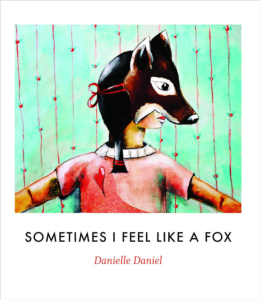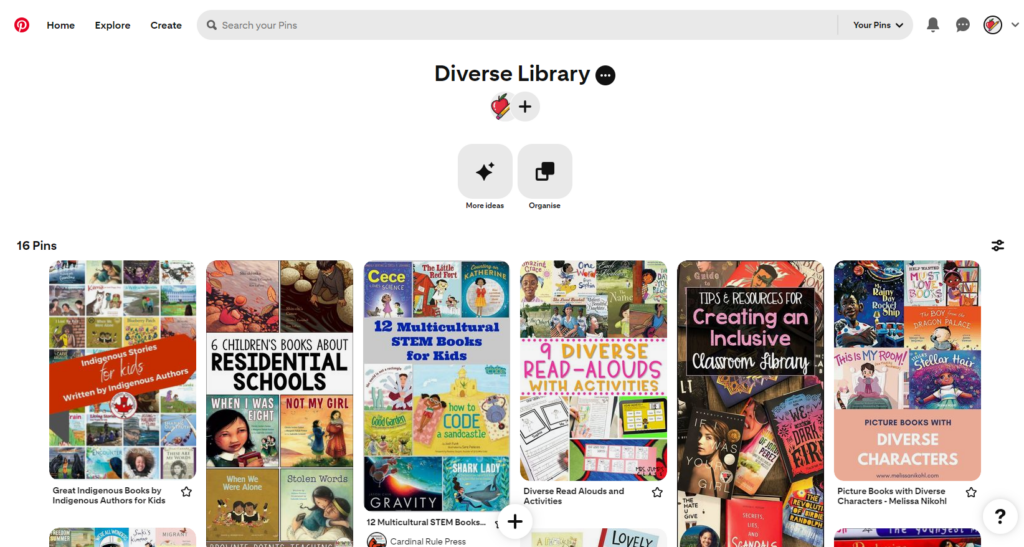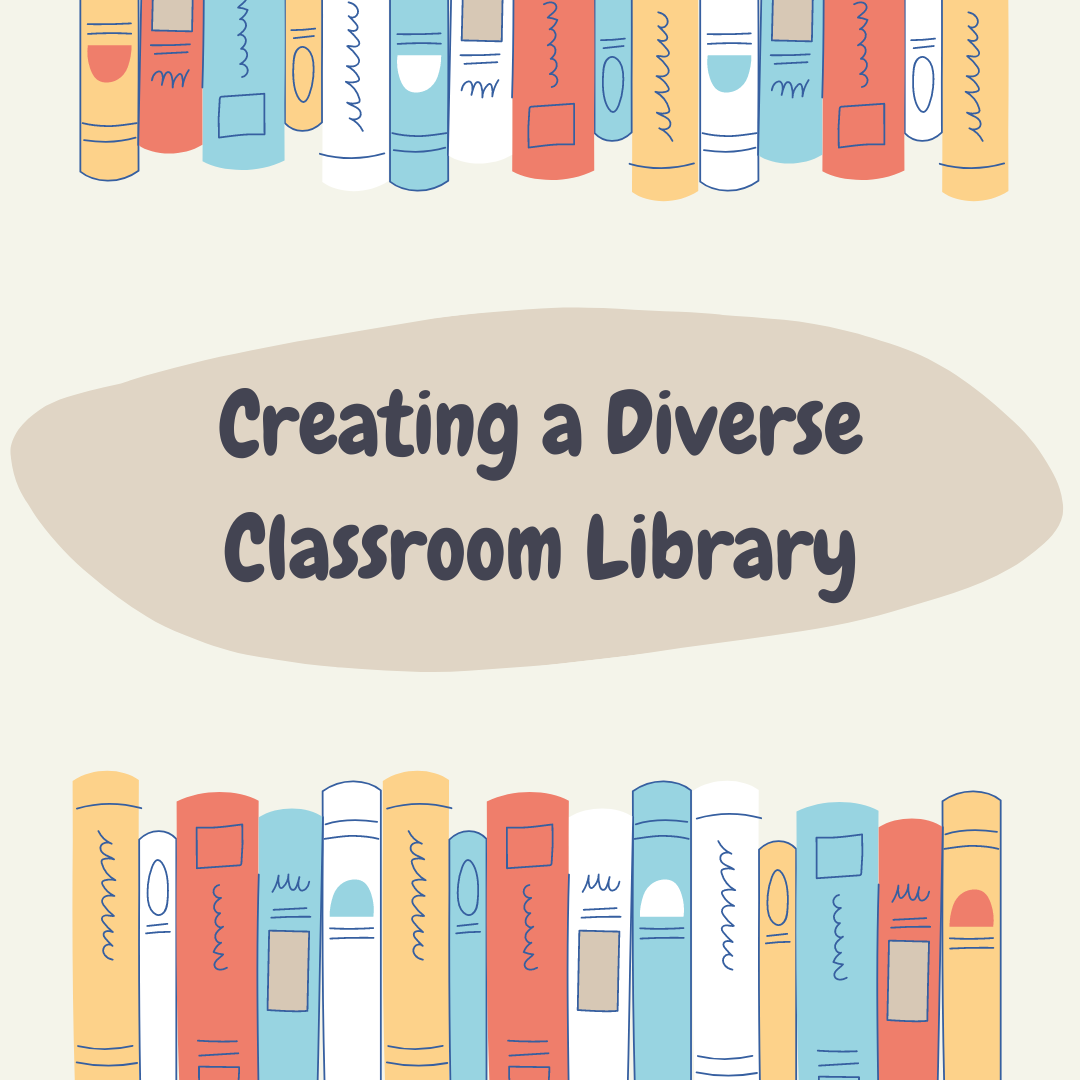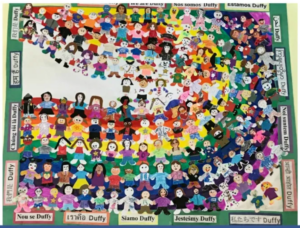WHY do we need a diverse library?
Last year I was introduced to Chimamanda Ngozi Adichie’s TED Talk entitled, “The Danger of a Single Story.” If you haven’t watched it, you NEED to. I have since listened to it three times. Her message is powerful and will impact the way I create my classroom library.
Chimamanda Ngozi Adichie begins her speech by telling the audience that as a child, she enjoyed reading and writing stories. The books that were available to her were books of white-skinned, blue-eyed British or American children and, so, the characters in the stories she wrote were white-skinned and blue-eyed. None of the characters were like her with “skin the color of chocolate [and] whose kinky hair could not form ponytails.” She passionately explains that by not exposing people to a diverse range of literature and stories, we run into the danger of feeding into stereotypes. She says, ““The consequence of the single story is this: it robs people of dignity. It makes our recognition of our equal humanity difficult, it emphasizes how we are different rather than how we are similar.”
As an aspiring teacher, Adichie’s words struck a chord within me. I want my students to find themselves in stories – and not just on an emotional level but on a physical level as well. I want my students to realize that people are more alike than they are different. I want to challenge stereotypes. I believe Adichie when she says, “The problem with stereotypes is not that they are untrue, but that they are incomplete. They make one story become the only story.”
In class this week, my commitment to create a diverse library expanded. I loved reading Rudine Sims Bishop’s words, “When children cannot find themselves reflected in the books they read, or when the
images they see are distorted, negative, or laughable, they learn a powerful lesson about how they are devalued in the society of which they are a part. Our classrooms need to be places where all the children from
all the cultures that make up the salad bowl of American [or Canadian] society can find their mirrors.”

What does the BC Curriculum say?
Valuing diversity
The following information was taken directly from the BC Curriculum website in regards to the necessity of,
“British Columbia’s schools include young people of varied backgrounds, interests, and abilities. The Kindergarten to grade 12 school system focuses on meeting the needs of all students. When selecting specific topics, activities, and resources to support the implementation of the curriculum, teachers are encouraged to ensure that these choices support inclusion, equity, and accessibility for all students. In particular, teachers should ensure that classroom instruction, assessment, and resources reflect sensitivity to diversity and incorporate positive role portrayals, relevant issues, and themes such as inclusion, respect, and acceptance. This includes diversity in family composition, gender identity, and sexual orientation” (BC Curriculum, emphasis added).
Where do I begin?
My teacher, Allie Kostiuk, provided the following sampling of children’s story books that could help diversify a classroom. I also pinned a few recommended collections to my Pinterest account, and for the remainder of this post, I will highlight a couple of the books that Allie or other Pinterest contributors recommended.


1. “All Are Welcome” by Alexandra Penfold and Illustrated by Suzanne Kaufman.
How does it support diversity? The book explores themes of diversity, inclusivity, and unity. The illustrations depict people of different cultures, abilities, and interests, and everyone is welcome.
What grades? The book is geared towards young children and It would be perfect in any Kindergarten to Grade 3 classroom library and could be used as a part of a lesson for student up to Grade 6.
Story snapshot: The story is set in a school where children from various cultural backgrounds and walks of life come together to learn and play. The book celebrates the idea that everyone, regardless of their differences, is welcome and valued. It emphasizes the importance of acceptance, understanding, and the beauty of a diverse community.
Activity idea: Make a Classroom Diversity Collage: Have students create a collage that represents diversity. Provide magazines, newspapers, and art supplies. Discuss their collages as a class, highlighting the unique contributions each student made. (Click on the image to be taken to Homegrown Friends for more details.)
2. “The Family Book” by Todd Parr

How does it support diversity? “The Family Book” by Todd Parr is a children’s picture book that celebrates diversity in families. Through simple, colorful illustrations, Parr introduces various family structures and situations, such as families with same-sex parents, single-parent families, and families with adopted children. His message is gentle and respectful to all family set-ups. The main message of the book is there is no one “right” way to be a family. Families come in all different arrangements and that’s okay.
What grades? The author has targeted this book for Pre-K to Grade 1 children.
Story snapshot: The book highlights that families come in all shapes, sizes, and colors, and it emphasizes the importance of love and acceptance.
Why I like this book: Classrooms are getting more and more diverse every year, as are families. This book will reach each student in my classroom – the student with a “traditional” type family, the student with adopted siblings, the student with a step-parent, the student with two mom’s, ALL students. The message is subtle and respectful and is unlikely to upset “traditionalist” parents.
Activity idea: I would read this book during an “All About Me” unit. I would then have the students complete a poster or worksheet about their family.

3. “Sometimes I Feel Like a Fox” by Danielle Daniel
How does it support diversity? “Sometimes I Feel Like a Fox” explores the concept of identity by creating metaphors from the Anishinaabe tradition of totem animals. The central theme of the book is the exploration of identity and the idea that people can embody different qualities and characteristics at different times (ChatGPT, 2024). In addition to this, the author, Danielle Daniel, is Indigenous which helps to diversify a library as well.
What grades? I envision the book being best used in Kindergarten to Grade 3 classrooms but can definitely be used in older grades as well.
Story snapshot: The story follows a young Indigenous child who, at different times, feels a connection to various animals. The child describes how, at times, they feel like a fox, while at other times, they may feel like a deer, owl, or another animal. Each animal represents a different characteristic or trait, such as being clever like a fox, gentle like a deer, or wise like an owl (ChatGPT, 2024).
Activity idea: In my Art class last year, I designed a multi-day art project around this book. Check it out here or click on the video below.
Need more ideas?
Please check out my Pinterest Board for additional book recommendations.


